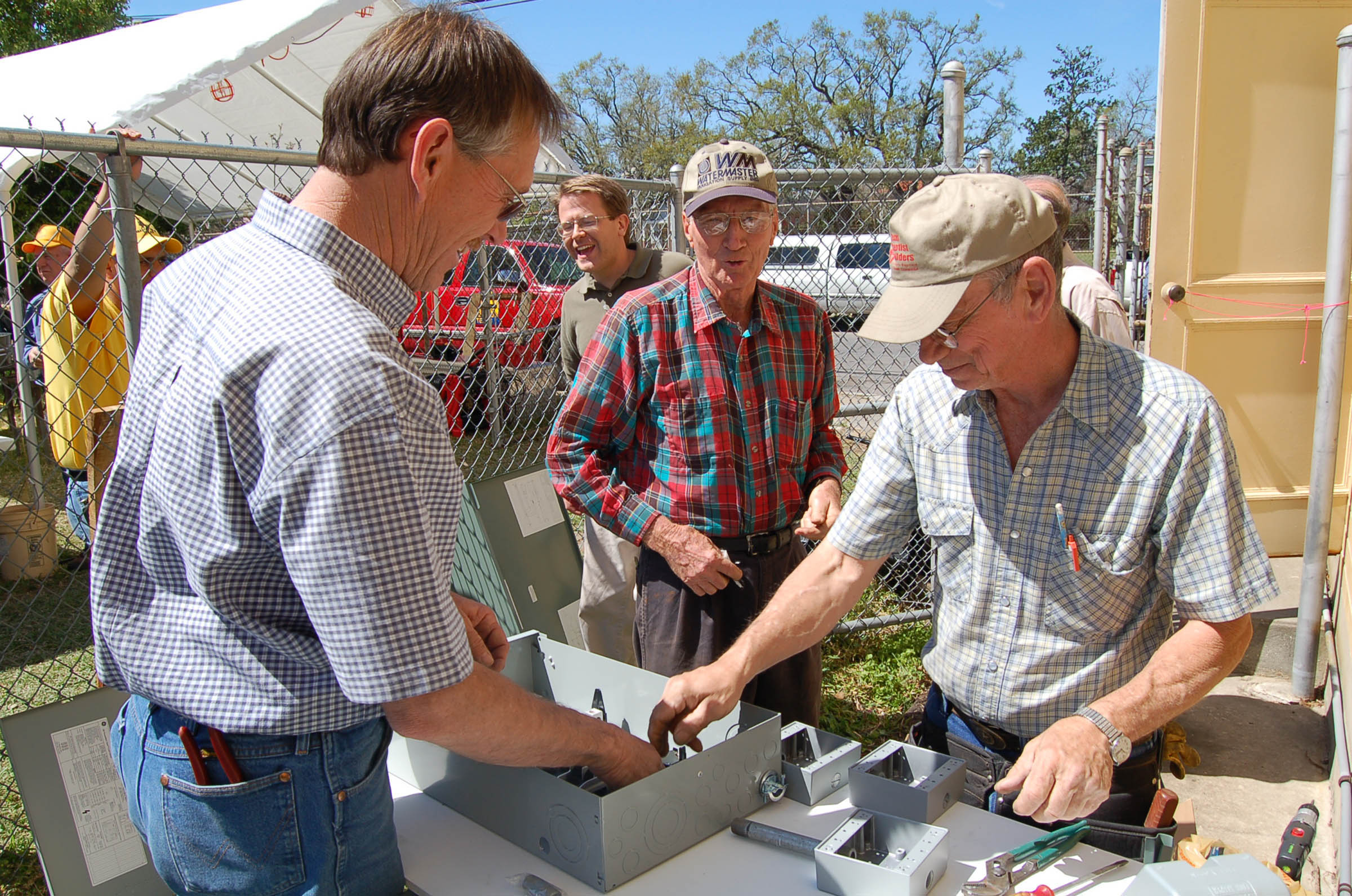
NEW ORLEANS (BP)–Grace Baptist Church and the surrounding Bywater neighborhood were battered by Hurricane Katrina’s winds but not the floodwater that inundated so much of New Orleans.
“This area, since most of it did not flood, is called the ‘Sliver on the River,’” pastor Bill Rogers said.
“This is going to be a land of opportunity,” said Rogers, buoyed by the teams of Southern Baptist Disaster Relief workers who have been painting, hanging sheetrock, wiring new air conditioning units and tending to other needs so the church get going again.
Rogers has been Grace Baptist’s pastor for 29 years and his father-in-law, Leslie Scharfenstein, was the pastor before him for 36 years.
Over the years, the Bywater neighborhood, so named in the 1940s because of its proximity to the River and the Canal, has experienced many changes. Before Hurricane Betsy destroyed the community in 1965, blue-collar Caucasians inhabited the area; after the storm, most of them moved to St. Bernard Parish, and the dwellings in Bywater became subsidized rental property for a poorer black community.
In recent years, Bywater became a historic district, rekindling interest in homeownership. But this brought another transition: The bohemian culture, known for attracting disenchanted people with non-traditional lifestyles, became a growing segment in Bywater, creating a gumbo mixed with one of New Orleans’ lowest economic populaces. The area was known for its artistic and homosexual lifestyles and also its drug culture, multiple murders and underperforming schools.
Now, months after Katrina, murders no longer dominate the news. The schools remain closed, with very little hope of reopening. Even before the storm, the neighborhood’s demographics counted only 6 percent children and youth.
Grace Baptist Church averaged 70 worshipers prior to Katrina, with the majority of the families from St. Bernard Parish and eastern New Orleans. The storm displaced about 75 percent of the congregation and all five of the church’s deacons.
But now signs of renewal are emerging.
Grace’s associate pastor, Charlie Dale, is beginning to see more families with young children moving into the immediate neighborhood.
And Southern Baptist Disaster Relief volunteers have helped bring hope to the Bywater community -– and not just by their manual labor, but also by ministering door-to-door.
A 75-member team of Texas volunteers, for example, invited people in the community to the church for an outreach featuring 200 pounds of boiled crawfish.
“I hope a lot of people come,” team leader John Taylor said prior to the event, “because I don’t think many of us from Texas are going to eat a lot of crawfish.”
The volunteers hailed from the Permian Basin and Lamesa Baptist associations and the Basin Baptist Network in southwest Texas.
“I was just so excited to get down here and get my hands dirty,” one of the Texans, Grant Kellar, said. “Then I found out I could go door-to-door and actually meet the people. I really wanted to do that and show the people of New Orleans that there are people that care about what’s happening to them.”
A roofer named Tracey was among the volunteers’ encounters. He professed faith in Christ yet was struggling with smoking marijuana.
“He was trying to get his life together,” Kellar said. “We talked to him, gave him a tract and prayed for him. His [home] church was destroyed [by the storm], so he was looking for a place to go. We told him that Grace was open and that there were good people to talk to him and care for him.”
–30–

















